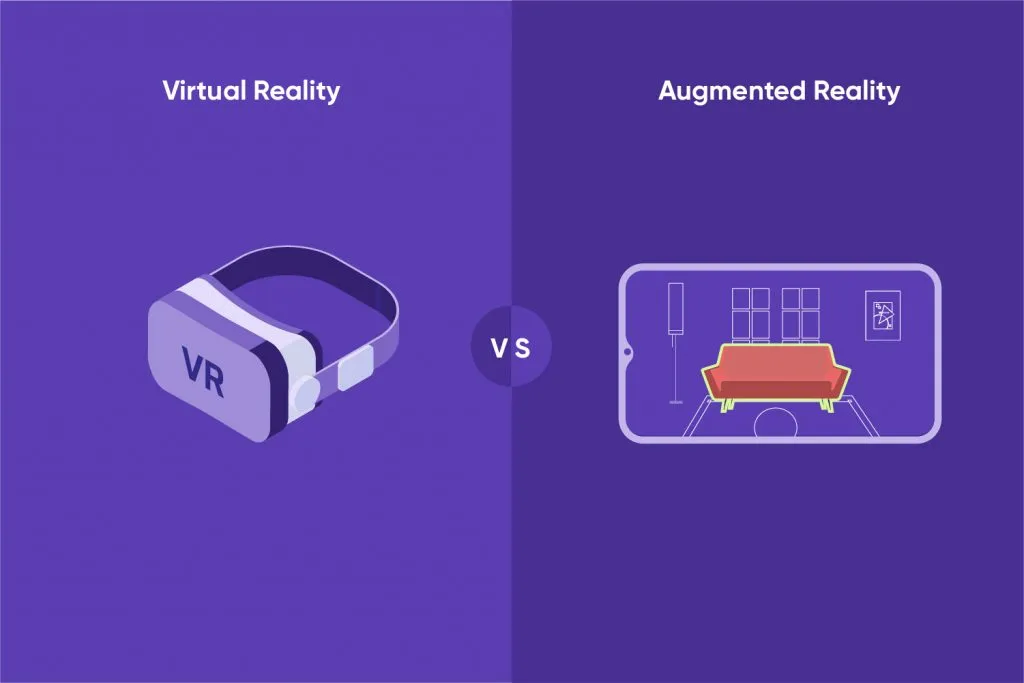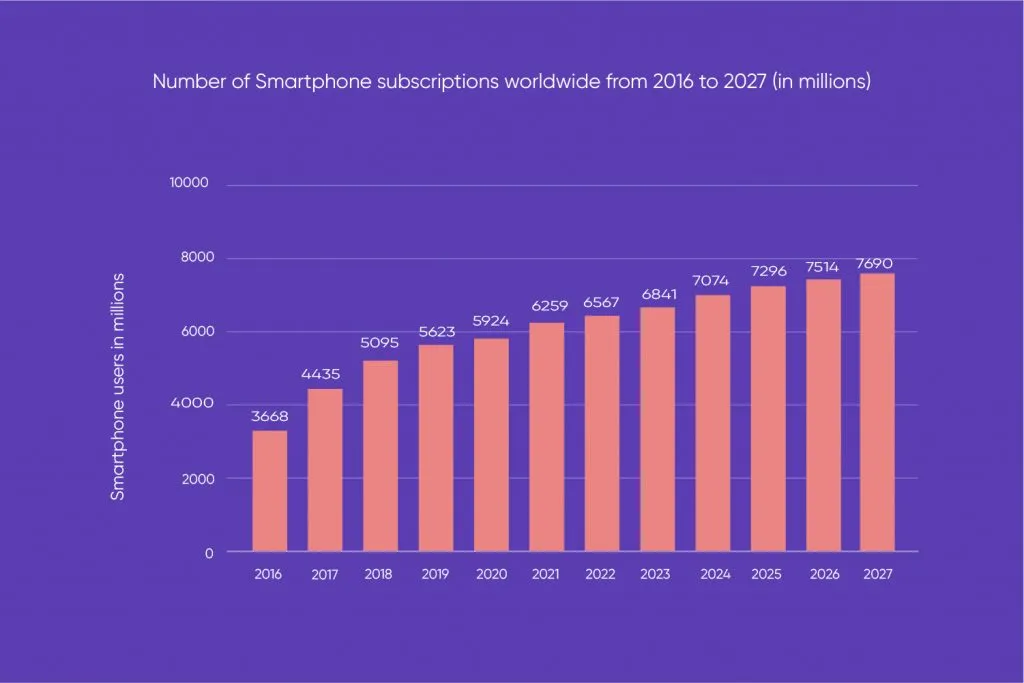Technology

3 min

Augmented Reality (AR) is an innovative technology that overlays digital content into the real world. It has gained significant popularity in the retail and e-commerce industry in recent years. AR can provide customers with unique experiences, increasing engagement, better brand awareness, and improved sales. This blog explores how AR can help boost your retail and e-commerce business.

By Digvijay Singh Tomar
28 Jun, 2022
Based on a research study by Ernst and Young (EY) , people mostly purchase electronics like computer-related items (40%), books (20%), travel & leisure (16%), clothing (10%), recorded music (6%), subscriptions (6%), gifts (5%) and investments (4%).
If you combine the first three categories, you have a 76% share of items people prefer to buy online.
But why are the numbers low in the other categories like clothing, footwear, music, gifts, etc.?
People would rather believe & invest in buying leisure items online than other products. All they have to do is to do proper online research before purchasing the product.
And in the case of non-electronic items like gifts, clothing, DIY Tools, etc., consumers prefer going off-line. The reason is simple too - fit the exact need, which is difficult when doing it on an online e-commerce website like Amazon, Meesho, Flipkart, BigBasket, etc.
But here's a catch that claims to give an immersive experience to buyers - Augmented Reality (AR) .
AR lets consumers, products, services, and clients stand out while building relationships, helping win loyalty, and inspiring action.
Today's biggest hurdles/challenges of online shopping are - a crowd of similar products and the non-availability of a whole sensory product experience.
In the off-line mode (showrooms, suites, shopping malls, or simply the brick- and-mortar environment), you are free to try on clothes, footwear, utensils, touch fabrics, or see and observe just how oversized a couch would look in your room if purchased.
A 360-degree virtual tour of the product you buy might seem promising, but it doesn't allow you to have a sensory experience like you feel in a reality/natural environment.
While a few things are possible in eCommerce, technically, it isn't possible in eCommerce websites/web apps to have a sensory experience so that you can buy the item and get it delivered in the same shape, size, and quality.
Thus, in that case, Augmented Reality (AR) applications offer an excellent way for customers to have detailed and complete information about the products companies (SMBs/SMEs/Big business giants) put on the market before the consumers and potential buyers — right from their homes.
Let's explore how Augmented Reality can help the eCommerce and Retail businesses grow.
Below is the list of items included in this blog post:
Augmented Reality (AR) refers to augmenting or adding to/expanding the two- dimensional views into a world like our physical world. This technology does it by combining it with a layer of digital information.
You can think of Jarvis (a beautiful example) in the Iron Man movie!!
What does an AR app do?
It shows you the physical world superimposed with computer-generated images.
There's a tremendous opportunity for AR/VR in Retail and eCommerce.
Because people are investing time in other activities and cannot physically go into a showroom to buy furniture and plumbing items, utensils for the kitchen, etc., You may also say that people are becoming lazier and seeking comfort around the corner. Or, when making a purchase, there are still some purchases for which buyers need more contextual information.
Whatever the case for an individual, it is a fact that people have gotten used to eCommerce, and it needs help from AR technology to sell more and more non- electronic items and help sellers attract consumers to buy products.
An AR app can make it easy for customers to buy DTC furniture and allow shoppers to customize and place true-to-scale 3D models of their products before them, making it feasible for consumers to check for size, shape, colors, etc., while boosting the sales for shoppers.

Often, most people use the terms Augmented Reality and Virtual Reality interchangeably, but they are pretty different.
Augmented Reality augments a world that is already around you. And you can still perceive it to some extent. Virtual Reality is about creating a world like Meta's Oculus Quest.
That is the development of an artificial world that gives people an immersive experience - a world in which artificial objects surround you.
In Virtual Reality, it isn't possible to see and experience the real world.
Do you remember the game Pokémon Go by Nintendo, one of augmented Reality's most notable projects to date?
Pokémon Go allowed users to play the game while walking down the street to catch their Pokémon while looking at the natural environment through their phone's camera that overlaid digital characters in specific places.
To experience Virtual Reality, one needs to wear a headset and hold controllers in your hand.
But be careful - you might be the person who punches their television while boxing in VR!
Thus, always make sure you have a safe physical environment is safe while experiencing the VR technology's adventures.
With AR, all you need is a smartphone/AR glasses. Because you'll be fully aware of your surroundings, there would be no need to clear the room to experience this futuristic technology and enjoy its adventures.
More people can experience Augmented Reality than Virtual Reality since AR requires less equipment and little to no safety precautions. It makes AR more accessible.
Whereas, if you create a VR app, there are only a bunch of people with VR equipment against the 3 billion smartphone users in the world today!
 Source: Statista
Source: Statista
Every type of AR technology provides slightly different capabilities. Below is the list of some common kinds of augmented reality apps to consider:
Such AR solutions, also known as Image Recognition or Marker-based AR, detect an object ( called the marker) before a camera and produces the required information about that object on display. That replaces the marker/object on display with its 3D version, making it easy for users to see the corresponding thing in its more detailed version when viewed from many angles.
This solution does not require the user to place a virtual object in a particular place. Instead, they can place it anywhere, and there's no need to get the thing triggered by a specific object in the real world. You can then rotate and move the object as you wish.
It is a type of markerless AR that uses geographic location to show the digital content in certain areas on a screen.
For example, the Pokémon Go game is a location-based AR solution.
This AR solution creates a digital experience by projecting artificial light onto physical surfaces. Or, in some cases, users are allowed to interact with it. Common examples of Projection-based AR include the holograms we've all seen in sci-fi movies like Iron Man, Avengers, Star Wars, etc.
Applications of Augmented Reality technology are powering an emerging world of tech-driven society. Advertisers in retail and eCommerce are taking note. Let's get into some figures to have a closer look at how it is changing the course of the online market:
Moreover, 5G availability will increase retailers' interest in AR and VR since 5G has more bandwidth.
Before purchasing, buyers who purchase items online need a preview of products and experience services in their environment and on their own time. Using AR, they can do so and are more likely to pick the right product at first sight.
“It looked great on the mannequin.”
Everybody
Eliminating frequent quotes in your customers' minds would help your business increase conversion rates. Thus, if your customers take the chance in buying the product and it doesn't work, you'll have high return rates.
Virtual try-on solutions are an excellent way for online shoppers and help them understand what they're buying and how that product will work. There are many applications of AR like this. For example, in the case of clothing, accessories, makeup, and even eyeglasses like Lenskart .
What will those glasses look like on your face, Rachel? How big will that sofa look in your living room? Answers to all these questions are harder to tell even when you're at the store looking at the physical item. Preview placement allows consumers to experience a product's appearance when placed in the natural environment.
Imagine you're selling a sophisticated product that needs learning before new customers can begin to use it. And you are well aware that you know quickly from visuals. Hence, an interactive user manual might be a great AR application in that case to help users better understand how a particular product works.
An interactive user manual helps people easily understand a piece of software, website, or app, for instance, by indicating certain buttons in the real-life environment with graphical arrows and animations with text.
You have probably used Instagram. Don't say no! I know, everyone does these days!! HAh!
Anyway! If you've, then you have shared Instagram or Snapchat Stories too! You can apply certain AR filters to your short video or image there. What does it do? It gives different effects. These AR filters were once for fun, but over the years, most brands are jumping on the AR bandwagon because of the social media effect propelled by people.
Representing a physical, 3-D product in a virtual, 2-D environment is tedious. AR can help in this regard.
Here are some practical observations about AR that can help you:
If you have cuffed your seatbelts to use Augmented Reality in your eCommerce activities business, here are a few things to consider:
Ask a question - What is there that you want to achieve by introducing the AR tech? And how will it help your customers? These questions are essential since they help you develop an excellent AR application/app. Be precise in understanding - what you want the customer experience/user experience to achieve.
Therefore, work hard and smartly in finding your vision and goals. Then jump into the technical aspects of your AR app, but not before. Once you know that, it'll be a smoother ride. Finally, choose the tech and techniques you need.
When you know what you want to develop/create, it's easy to identify the tools and techniques. Thus, there are a few aspects you can take into account while developing the Tool:
For a limited budget, go for an AR platform that offers a free license. But remember - the free version won't be robust as the full software.
You may think that a tool is great and let's use it, but it also has to support the hardware for the smooth functioning of your augmented reality app. Make sure the Tool supports the hardware, whether it is a mobile device, laptop, or AR glass.
Make sure to develop the AR app on those mobile app development platforms that support almost all operating systems.
Carefully examine and determine the Tool - what exact features do you need? For example, geolocation functionality to create a location-based AR app.
Now that you're ready with your Tool, you'll want that the world knows it. So, here are a few ways that can help you immensely in getting the word out:
Demo video(s) - Make promotional videos demonstrating how to use it.
In-app instructions - Provide people with straightforward ways to understand what they're supposed to do? And How to get the most out of your AR app.
Make your content shareable - Enable users to share their AR experience with friends and social media contacts.
There are product categories that are a tough sell on eCommerce websites. That's because it's pretty tedious even to interpret how the products will be in real life vs. on a computer or mobile display. AR applications — particularly in the wake of social distancing due to the Covid-19 outbreak — are increasing in demand.
This blog post has provided information on different types of augmented reality techs, associated use cases, and the advantages of using them in your next eCommerce business. Also, this article beautifully mentions - how you can evaluate whether you're making the right choice for your eCommerce business. And if that's the case, you can follow the above steps or get in touch with us to bring your next AR app to life.
Generative AI Implementation Strategy: From Concept to Deployment (Step-by-Step Guide)
By Sannidhya Sharma
5 min read
How to Design a Web App: From Wireframes to Working Prototype
By Dhruv Joshi
5 min read
How Much Does Generative AI Development Cost in 2026?
By Dhruv Joshi
5 min read
How to Build an AI Adoption Roadmap That Ensures Measurable ROI
By Garima Saxena
5 min read

Technology

7 min
Generative AI is moving fast into enterprises, from banks to hospitals to government agencies. Adoption is rapid, but security planning lags. Unlike traditional systems, these models can be exploited through prompt injection, poisoned data, or manipulated to leak sensitive information. They are also misused for phishing, deepfakes, and malicious code.


Technology

7 min
AI-powered Web Application Firewalls (WAFs) go beyond static rules by using machine learning, anomaly detection, and predictive analysis to block zero-day threats, reduce false positives, and protect APIs at scale. Unlike traditional WAFs, they self-learn, adapt in real time, and cut operational costs while improving compliance and trust.


Technology

5 min
AI is redefining mobile app security by transforming how threats are detected, tested, and prevented. From continuous monitoring and fraud detection to compliance with regulations, AI ensures apps remain resilient against modern risks. This means safer apps, protected users, and stronger businesses. Investing in AI-driven security today builds trust, drives growth, and secures long-term competitive advantage.


Feeling lost!! Book a slot and get answers to all your industry-relevant doubts